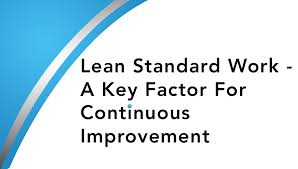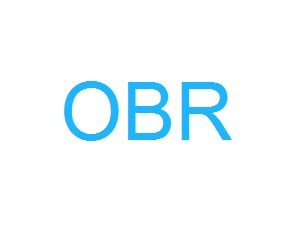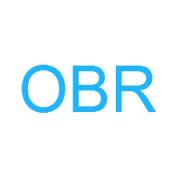 The Lean term ‘Standard Work’ covers the ‘What and How’ that is part of a job description. It is the process ‘Best Practice’ and is the ‘baseline’ for ‘Kaizen Sprints’ and ‘Continuous Improvements’. Standard work in the ‘engineering sense‘ indicates that the process has been ‘Studied’ (designed) and a ‘Standard Rate’ and ‘Production Method’ have been developed. From an operations perspective, the critical result is delivery of ‘expected production’. Still, there are many ‘factors’ built into ‘standard work’. 1) Quality 2) Efficiency and 3) Continuous Improvement.
The Lean term ‘Standard Work’ covers the ‘What and How’ that is part of a job description. It is the process ‘Best Practice’ and is the ‘baseline’ for ‘Kaizen Sprints’ and ‘Continuous Improvements’. Standard work in the ‘engineering sense‘ indicates that the process has been ‘Studied’ (designed) and a ‘Standard Rate’ and ‘Production Method’ have been developed. From an operations perspective, the critical result is delivery of ‘expected production’. Still, there are many ‘factors’ built into ‘standard work’. 1) Quality 2) Efficiency and 3) Continuous Improvement.
From the saying ‘Rubber Meets the Road’, ‘Standard Work’ is the ‘Rubber’! All systems (manual, semi-automated and automated) will eventually ‘go awry’ without a ‘designed process’ to ‘complete the task‘. This may seem obvious, but most ‘efficiency losses‘ can be attributed to 1) ‘Lack of a Process’, 2) ‘Lack of Adherence to a Process’ or 3) ‘Lack of Process Optimization’.
As usual, attention is drawn to a system when there is enough competition to ‘take your lunch’. It is at this point that ‘leaders’ begin to focus on efficiency. Losses from Quality are much more apparent as the ‘customer’ is not satisfied. The difference between efficiency and quality optimization is that efficiency losses can be ‘hidden’and less obvious while quality is a ‘customer expectation’. Efficiency, Quality and Continuous Improvement contribute to optimized profit margins.
The Lean tool of ‘Kaizen Sprint’ is an event that focuses associates and stakeholders on quickly ‘Optimizing Process Steps’. ‘Kaizen Sprints‘, along with the optimization opportunities of ‘Just Do It’ and ‘Projects’ are prioritized for accomplishment by ‘system constraints and benefits’. (i.e. ‘Time and Cost’ for Implementation vs. ‘Return on Investment’).
A business, (like the ‘human species’), is continually in need of ‘maintenance’ to fight the ‘Chaos of Entropy’ (i.e. ‘Loss of Order’ brought on by ‘Lack of Standards’). It is a management responsibility to design and set ‘production standards and process methodologies’. It is also a management responsibility to construct systems to give associates an opportunity to ‘excel’ and ‘participate’ in Continuous Improvement. Team ‘Huddles’, prior and post operations, are one ‘avenue’ for ‘operational feedback’. Motivation can lead to innovation of systems. Varying ‘Motivational Strategies‘ include team and personal ‘Rewards’ for achieving individual, group, and company goals.
The subject of ‘Standard Work’ may seem ‘Dry and Mundane’ but if competition is ‘having your lunch’, business survivability requires a solid foundation of operation ‘expectation and delivery’. ‘Business Growth’ is obtainable via capacity discovered from systems controlled with ‘Standard Work’!
Todd Adams
OBR Optimization Engineering: Lean Six Sigma CI, ERP Software Development, Quality Systems Enhancement, Business Process Improvement, CI Project Work. www.OBREngineering.com; POC: Todd Adams, Todd.Adams@OBREngineering.com; (424) 241-0290.
As the Famous Sales Guru Grant Cardone says, 10X your OBSESSION!



